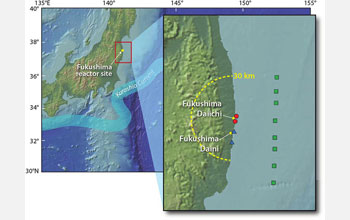The health ministry is proposing much stricter regulations on radioactive cesium in food that would lower the current limit of 500 becquerels per kilogram to 100.
Changes would also be made to the cesium limits for milk and water. For example, limit for milk would be lowered from 200 becquerels per kilogram to 50, while the limit for water would drop from 200 becquerels to just 10, finally bringing Japan's standards in line with those used by the World Health Organization.
The proposal will be submitted to the ministry's Pharmaceutical Affairs and Food Sanitation Council on Thursday, and then to the science ministry's Radiation Council.
Once approved, the new limits will take effect in April. Specific limits for other items, including rice and beef, would be phased in over 6 to 9 months.
The new regulations are intended to limit the total internal exposure from food to less than 1 millisievert per year for those on a normal diet.
However, it is unclear just how many food makers are monitoring their products for radiation.
The current, provisional limit, which was only set after the March 11 nuclear crisis emerged at the Fukushima No. 1 power plant, is 5 millisieverts per year.
To further protect small children, who are more vulnerable to radiation exposure, the government will require that baby food contain no more than 50 becquerels per kilogram.
The health ministry estimates that a person exposed to the upper limit for radioactive cesium would get a dose around 0.7 millisievert over a year.
In October, the Food Safety Commission, a government panel made up of independent experts, concluded that an annual dose of 100 millisieverts or more would pose health risks. The health ministry's discussions on lowering the provisional limits were based on this report.
Hideaki Karaki, a food safety expert at Kurashiki University of Science and the Arts, said the strictness of the proposal is intended to ensure a margin of safety.
"People shouldn't worry too much even if (the contamination level in) some food exceeds the new limits" to some extent, he said.
Karaki said one-time exposure to food above the government ceiling won't pose a health risk.
"If a child drinks 1 kg of water that contains 10 becquerels of radioactive cesium, the total exposure would be 0.00024 millisievert. If an adult drinks the same amount, total radiation exposure would be 0.00016 millisievert. Considering that, the new regulation limit is very strictly set," Karaki said.
A cumulative dose of 100 millisieverts increases the chances of dying of cancer by 0.5 percent, according to the International Commission on Radiological Protection, an organization of scientists that makes recommendations on radiation regulations.


